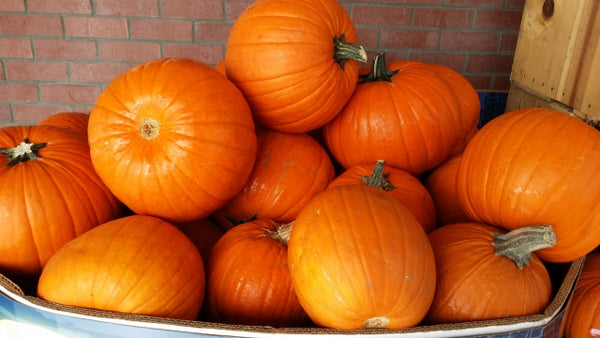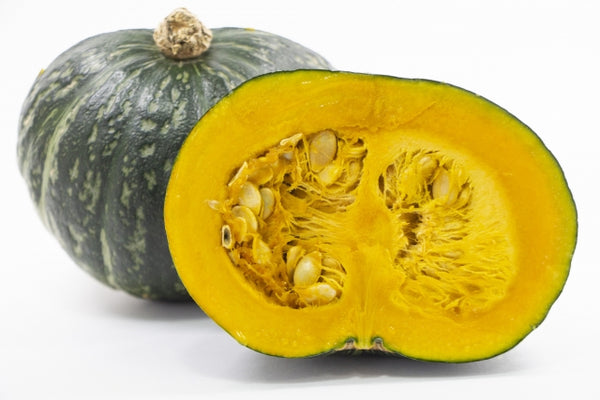Kabocha vs. Pumpkin

With the spooky season just behind us and the pumpkin spice season in full swing, most of us are probably surrounded by pumpkins in one way or another. In Japan, the pumpkin spice craze doesn’t quite take over the country the same way it does in America each Fall, but there is a similar seasonal treat that takes its place: kabocha.
Resembling a small green pumpkin, the Japanese kabocha squash is a member of the gourd family and is thought to have been introduced to Japan in the 14th century by Portuguese travelers. That’s actually where the name kabocha is believed to come from, borrowing from the original Portuguese word “camboja.” With its light flavor and a sturdiness that can withstand many cooking preparations, it is a beloved seasonal ingredient and a staple in kaiseki cuisine.
Despite this, in recent years in Japan, the buttercup squash (known as seiyou kabocha) has surpassed the Japanese kabocha in popularity for its higher sugar content and soft, flaky texture.

Different from the seiyou and Japanese kabocha, the stereotypical pumpkin most Westerners are familiar with, round and orange and perfect for carving Jack-o'-lanterns, falls under a third category: the pepo kabocha. This is an almost catch-all term for a species that includes a large variety of pumpkins, gourds, and squashes. In fact, some translate the word kabocha to mean “squash,” translating the Japanese kabocha as “tropical squash,” the seiyou kabocha as “winter squash,” and the pepo kabocha as “summer squash.” In other words, a pumpkin is a type of kabocha…making things a little more confusing.
Nevertheless, the Japanese kabocha is quite different from the pumpkin. The obvious differences are the size, shape, and color, but they’re also different in how they’re prepared. For the most part, the pumpkins in America are bred and cultivated for decorative purposes, so they don’t have a particularly appealing taste or texture. In fact, some may be surprised to learn that the cans of pumpkin puree you find in stores are mostly made from winter squash, not the orange pumpkin on the label!

On the other hand, there are a large variety of ways to prepare and eat the Japanese kabocha. One popular way is to cut the squash into large bite-sized chunks and simmer it in a simple soy and sugar sauce until it’s soft and flaky. These delicious chunks can be added to other dishes or served as a side dish all on their own. Alternatively, by cutting the squash into thin crescents, you can batter them and deep fry them as tempura. Their soft texture is a perfect balance for the crunch of the fried batter, and the sweetness is a compliment to the salty exterior. They also make for a perfect addition to miso soups and savory stews.
Any way you cut it, pun intended, the kabocha is a perfect addition to anyone’s seasonal Fall recipes (and doesn’t even need to take up the spot of that orange pumpkin on your porch).
About the Author:
 Kevin Kilcoyne
Kevin Kilcoyne



